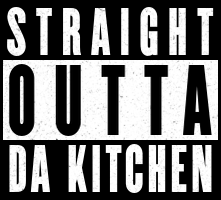
Intermediate Pickleball Strategy: Mastering the Game Beyond the Basics
Share
As an intermediate pickleball player, you’ve already grasped the basics – serving, returning, and dinking – but now you’re ready to step up your game. Moving from beginner to intermediate means mastering more advanced pickleball strategies that will give you the edge over your opponents and make you a more well-rounded player. Here are key strategies to improve your game and take you to the next level.
1. Control the Kitchen (Non-Volley Zone)
The kitchen, also known as the non-volley zone, is a critical area for controlling the pace and flow of the game. As an intermediate player, it's time to not only stay out of the kitchen but use it to your advantage. Here’s how:
Dink with Purpose: Dinking isn’t just about keeping the ball low; it’s about controlling where the ball goes. Mix up your shots by targeting different areas – cross-court, down the line, or even at your opponent’s feet. Varying the placement can force errors or create openings for an attack.
Step into the Kitchen Line with Confidence: Being closer to the net gives you more control and better opportunities to make offensive plays. Learn to volley effectively and take advantage of any opportunity to move forward without crossing into the kitchen.
Master the Soft Game: Soft shots, including dinks and drop shots, are crucial. The goal is to keep your opponents back while you move in and take control of the net. Play softer to force them to pop up the ball, giving you an opportunity to smash.
2. Third Shot Drop: Make it a Weapon
The third shot drop is one of the most important shots for intermediate players to master. After the serve and return, the third shot gives you the chance to transition from defense to offense. Executing a well-placed third shot drop forces your opponents to hit upward and often allows you to move into the kitchen.
Aim for the Feet: A good third shot drop should land softly in the kitchen, making it difficult for your opponent to return aggressively. Ideally, aim for their feet or slightly off-center, forcing awkward returns.
Be Consistent: This shot takes practice and finesse. Work on being able to consistently hit a soft, controlled drop shot from the baseline or midcourt. Once mastered, it becomes a weapon that will set up your net play and open opportunities for you and your partner.
3. Communicate with Your Partner
Doubles pickleball requires solid teamwork and communication. Intermediate players should be working in sync with their partners, moving as a unit and anticipating each other’s plays.
Stay in Position: The goal is to cover the pickleball court effectively without leaving large gaps. Always move together as a team – when one moves to the kitchen, the other should follow.
Call the Shots: Let your partner know when you’re taking a shot or need help. “Mine,” “yours,” and “switch” are all important phrases that should be used regularly during play. Clear communication prevents confusion and leads to better court coverage.
Poach When Necessary: Poaching – stepping across into your partner’s area to take a shot – can be an effective way to disrupt your opponents’ rhythm. Just make sure you and your partner are on the same page to avoid leaving your side of the pickleball court open.
4. Use Spin to Your Advantage
As your game improves, so should your ability to add spin to your shots. Whether it's topspin to keep the ball low or backspin to slow it down, spin can make your shots more difficult to predict and return.
Topspin for Attacking: Adding topspin to your volleys or groundstrokes can help keep the ball low over the net and bounce away from your opponent, making it harder to return aggressively.
Backspin for Defense: A defensive shot with backspin can slow the pace of the game and make the ball land softer, giving you time to reposition or forcing your opponent to generate their own power.
5. Recognize and Exploit Opponent Weaknesses
At this level, it’s important to observe your opponents' tendencies and weaknesses. Are they uncomfortable with high balls? Do they struggle with backhand shots? Knowing this information allows you to strategically target their weaknesses throughout the match.
Mix Up Your Shots: Don’t give your opponent the same shot over and over. A combination of hard drives, dinks, and angled shots keeps them guessing and creates more opportunities for errors.
Target the Weaker Player: In pickleball doubles, it’s common to target the weaker player, forcing them to make mistakes. However, be cautious – this strategy only works if it’s not overly predictable. Switch up who you’re hitting to, and test both opponents to see who cracks under pressure.
6. Stay Mentally Sharp
Pickleball isn’t just about physical skill; it’s also a mental game. As you progress, staying calm under pressure and making smart decisions becomes even more important.
Don’t Rush: One of the biggest mistakes intermediate players make is rushing their shots. Take your time, set up your shot, and aim for precision rather than power.
Stay Patient: Some points take time to develop, especially in dink battles at the net. Don’t feel pressured to go for a winner too soon; instead, wait for the right opportunity to strike.
Adapt Your Strategy: Be willing to change your approach based on how the match is going. If your usual tactics aren’t working, try switching things up – whether it’s being more aggressive or focusing more on defense.
7. Improve Your Footwork
Great pickleball players have excellent footwork. Being in the right position to hit the ball is half the battle. Work on moving quickly and efficiently around the pickleball court.
Shuffle to the Ball: When moving side to side, shuffle rather than crossing your feet. This keeps you balanced and ready to hit the ball from any angle.
Stay Low: Bending your knees and staying low to the ground gives you better stability and helps with quick movements. This is especially important when transitioning to the net after a third shot drop.
Final Thoughts
As an intermediate pickleball player, strategy becomes more important than ever. Mastering the kitchen, perfecting your third shot drop, communicating with your partner, and incorporating spin and footwork are all crucial elements of taking your game to the next level. Focus on these strategies, and you'll soon find yourself dominating the court with confidence and precision.
Now get out there, put these tips into practice, and watch your game soar!
Looking for the best pickleball gear? Check out our Straight Outta Da Kitchen Shop for top-rated apparel and accessories to elevate your game!
